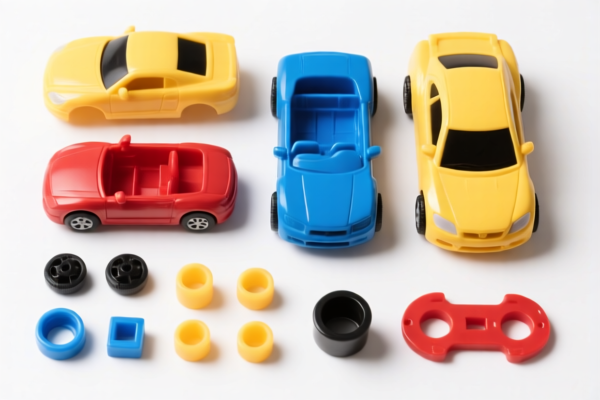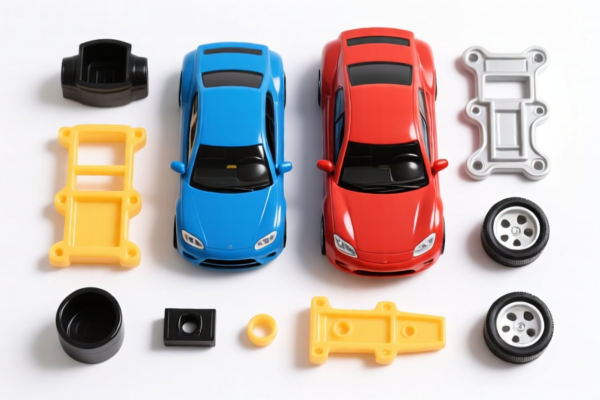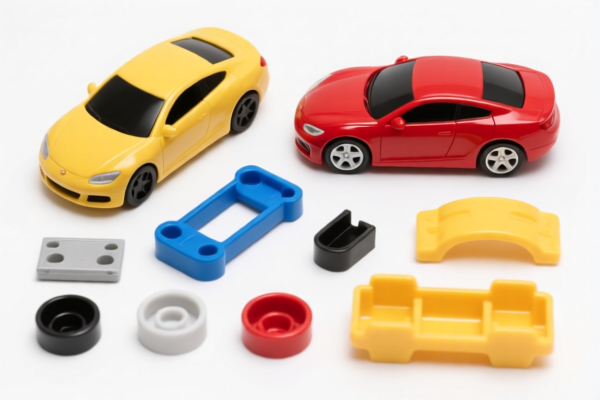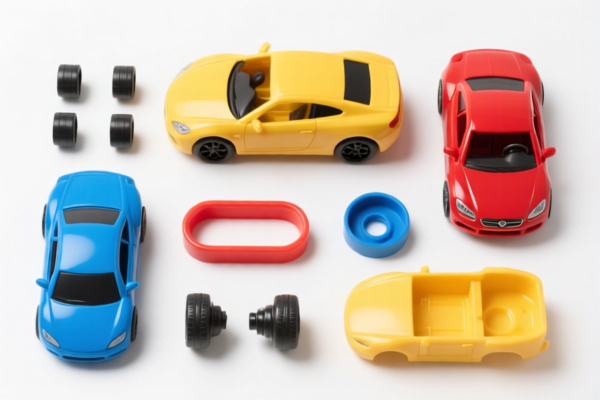| HS Code | Official Doc | Tariff Rate | Origin | Destination | Effective Date |
|---|---|---|---|---|---|
| 8714998000 | Doc | 47.5% | CN | US | 2025-05-12 |
| 9503000090 | Doc | 30.0% | CN | US | 2025-05-12 |
| 9503000071 | Doc | 30.0% | CN | US | 2025-05-12 |
| 9506991500 | Doc | 30.0% | CN | US | 2025-05-12 |
| 3926903000 | Doc | 59.2% | CN | US | 2025-05-12 |
| 3916905000 | Doc | 60.8% | CN | US | 2025-05-12 |
| 3916903000 | Doc | 61.5% | CN | US | 2025-05-12 |
| 7326908688 | Doc | 82.9% | CN | US | 2025-05-12 |
| 7326908688 | Doc | 82.9% | CN | US | 2025-05-12 |
| 7325995000 | Doc | 82.9% | CN | US | 2025-05-12 |
| 7325991000 | Doc | 80.0% | CN | US | 2025-05-12 |




Toy Car Parts
Toy car parts encompass a wide range of components used in the construction and repair of miniature vehicles designed for play. These parts vary significantly based on the scale, complexity, and intended function of the toy car.
Materials
The materials used in toy car parts are diverse, reflecting cost, durability requirements, and the level of detail desired. Common materials include:
- Plastic: The most prevalent material, encompassing various types like ABS, polypropylene, and polystyrene. ABS is favored for its impact resistance and ability to be molded into complex shapes.
- Metal: Die-cast zinc alloy (Zamak) is frequently used for car bodies and chassis, providing weight and a more realistic feel. Steel is used for axles and some internal components requiring strength.
- Rubber: Used for tires, providing traction and cushioning.
- Electronics: Increasingly common in modern toy cars, including circuit boards, motors, LEDs, and sensors.
- Other Materials: Glass (for windshields), acrylic (for lights), and occasionally wood or fabric for specific models.
Purpose
The purpose of toy car parts can be broadly categorized as:
- Construction: Parts used in the initial assembly of a new toy car.
- Replacement: Parts used to repair or restore existing toy cars damaged through play.
- Modification/Customization: Parts used to alter the appearance or performance of a toy car, often by hobbyists.
Function
Toy car parts fulfill numerous functional roles:
- Structural: Chassis, bodies, and frames provide the car’s basic shape and support.
- Locomotion: Wheels, axles, motors, and gears enable movement.
- Steering: Steering mechanisms allow for directional control.
- Power: Batteries, switches, and wiring provide energy.
- Aesthetic: Bodies, windows, lights, and interior details contribute to the car's visual appearance.
- Suspension: Springs and dampers improve ride quality and handling.
Usage Scenarios
- Play: The primary use, involving children or collectors playing with the toy car.
- Collection: Collectors often acquire and maintain toy cars, requiring replacement parts for restoration or display.
- Hobby/DIY: Enthusiasts modify and customize toy cars, requiring a wide range of parts for upgrades and alterations.
- Racing/Competition: Radio-controlled (RC) cars utilize specialized parts for performance optimization in racing events.
Common Types
- Bodies: The exterior shell of the car, often made of plastic or die-cast metal.
- Chassis: The underlying frame of the car, providing structural support.
- Wheels & Tires: Enable movement and provide traction. Different types exist for various terrains (on-road, off-road).
- Axles: Connect the wheels to the chassis.
- Motors: Provide the power for movement. Types include brushed and brushless motors.
- Gears: Transmit power from the motor to the wheels.
- Steering Servos: Control the direction of the wheels.
- Electronic Speed Controllers (ESCs): Regulate the speed of the motor.
- Batteries & Chargers: Provide power and recharge the battery.
- Suspension Components: Springs, dampers, and shock absorbers.
- Remote Controls & Receivers: Used in RC cars for wireless control.
- Lights & LEDs: Provide illumination and visual effects.
- Interior Parts: Seats, steering wheels, dashboards, and other details.
Toy car parts can encompass a variety of components used in the assembly or as replacements for toy vehicles. Classification depends on the specific material, function, and intended use of the parts.
Here are relevant HS codes based on the provided reference material:
-
8714998000: This code covers “Parts and accessories of vehicles of headings 8711 to 8713: Other: Other”. This is a broad category and may apply if the parts are specifically designed for vehicles within those headings.
- 87: Chapter – Vehicles and their parts and accessories.
- 14: Heading – Parts and accessories of vehicles.
- 998000: Subheading – Other parts and accessories not specified elsewhere. The tax rate is a base tariff of 10.0%, an additional tariff of 7.5%, and an additional tariff of 30.0% after April 2, 2025, resulting in a total tariff of 47.5%.
-
9503000090: This code covers “Tricycles, scooters, pedal cars and similar wheeled toys; dollsʼ carriages; dolls, other toys; reduced-scale (“scaleˮ) models and similar recreational models, working or not; puzzles of all kinds; parts and accessories thereof Other”. This is applicable if the parts are for these types of toys.
- 95: Chapter – Toys, games and sports equipment.
- 03: Heading – Tricycles, scooters, pedal cars, dolls, and toys.
- 000090: Subheading – Other parts and accessories. The tax rate is a base tariff of 0.0%, an additional tariff of 0.0%, and an additional tariff of 30.0% after April 2, 2025, resulting in a total tariff of 30.0%.
-
9503000071: This code covers “Tricycles, scooters, pedal cars and similar wheeled toys; dollsʼ carriages; dolls, other toys; reduced-scale (“scaleˮ) models and similar recreational models, working or not; puzzles of all kinds; parts and accessories thereof “Childrenʼs productsˮ as defined in 15 U.S.C. § 2052: Other: Labeled or determined by importer as intended for use by persons: Under 3 years of age”. This applies specifically to parts for children’s products intended for use by children under 3 years of age.
- 95: Chapter – Toys, games and sports equipment.
- 03: Heading – Tricycles, scooters, pedal cars, dolls, and toys.
- 000071: Subheading – Parts for children’s products under 3 years of age. The tax rate is a base tariff of 0.0%, an additional tariff of 0.0%, and an additional tariff of 30.0% after April 2, 2025, resulting in a total tariff of 30.0%.
Please note that the applicable HS code will depend on the specific characteristics of the toy car parts. If the parts are for vehicles covered under headings 8711 to 8713, code 8714998000 may be appropriate. If the parts are for tricycles, scooters, or pedal cars, codes 9503000090 or 9503000071 may be more suitable.
Customer Reviews
No reviews yet.